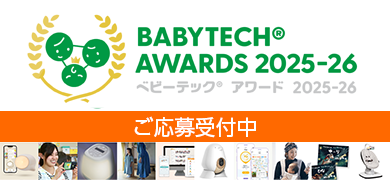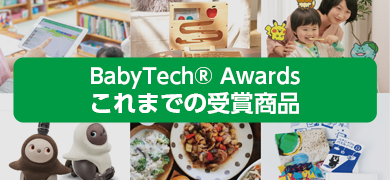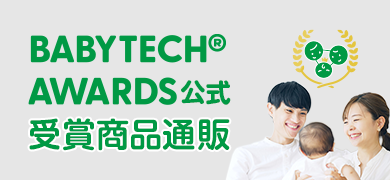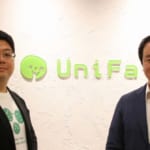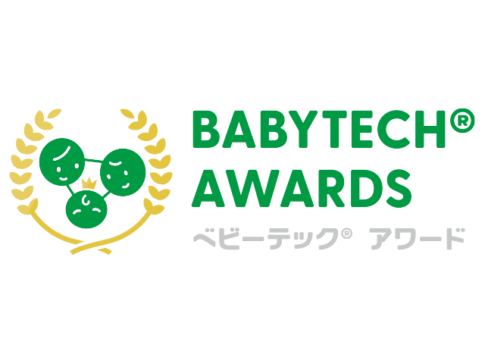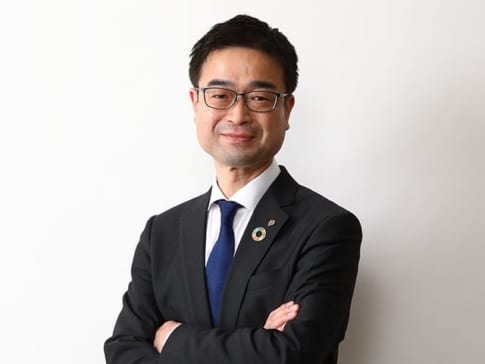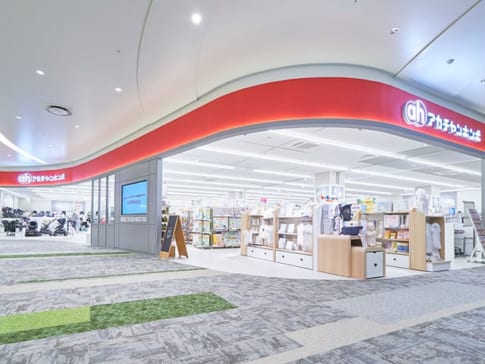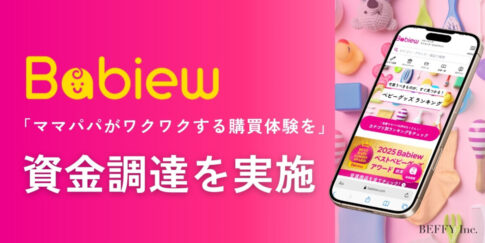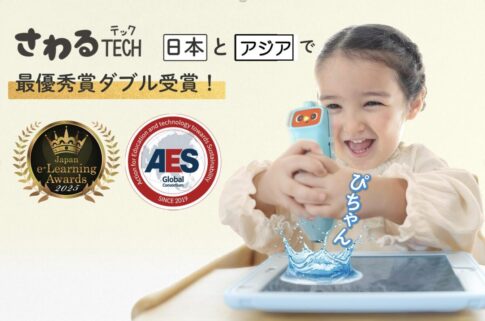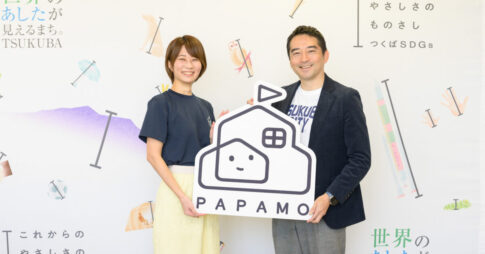- Deep learning technology for analyzing "children's cries" is a global rarity.
- CryAnalyzer Auto" exhibited at CES drew a great response and the booth was a huge success.
- The baby tech market in Europe and the U.S. is large, and Hwa's business is likely to be greatly accelerated by its participation in CES.

Appearance of CryAnalyzer Auto
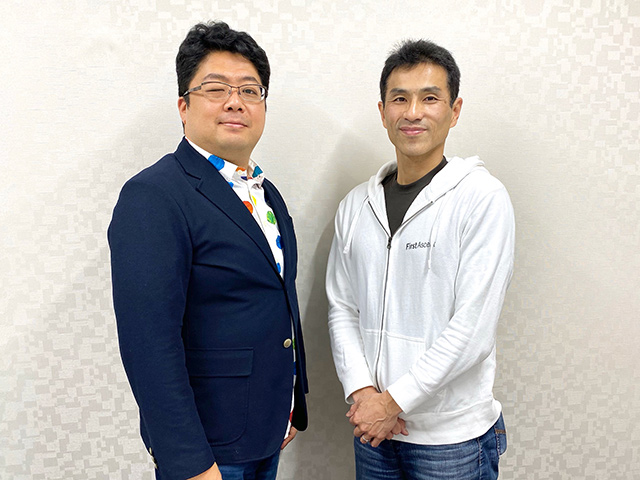
Mr. Tomoyuki Hattori (right) and Mr. Nagata (left)
(Interacted with...)
First Ascent Inc. Representative Director and CEO
Mr. Banyuki Hattori
Papa Smile Co.,Ltd representative director (i.e. someone chosen by the board of directors from among the directors to actually represent the company)
Tetsuya Nagata
CryAnalyzer Auto" technology born from "needs" and "deep learning
Nagata:When we asked people who attended this year's CES, they were almost unanimous in saying that "CryAnalyzer Auto" was the sharpest and edgiest product at this year's baby tech show. So, can you start by telling us how "CryAnalyzer Auto" was developed?
Hattori:The development of "CryAnalyzer Auto," which diagnoses "baby's emotion (=reason for crying)" from "baby's crying voice," was based on the match between social needs and our research theme in deep learning. Our childcare record application, "PapaPapa Childcare@Akachan Notebook," has been gathering needs in the form of user surveys, and we regularly receive requests from users who want to know the reason why their babies are crying. We were also convinced that there was a high need for this service, as a certain milk manufacturer reported in a survey that the most stressful time for parents in child-rearing is when their baby is crying. At the same time, when the technology of deep learning emerged, we wondered what we could do. Since the methodologies for analyzing images and converting voice into text using deep learning had already been established, we decided that this would not be interesting, so we started R&D (research and development) in the direction of "baby cry diagnosis," which analyzes emotions from voice.
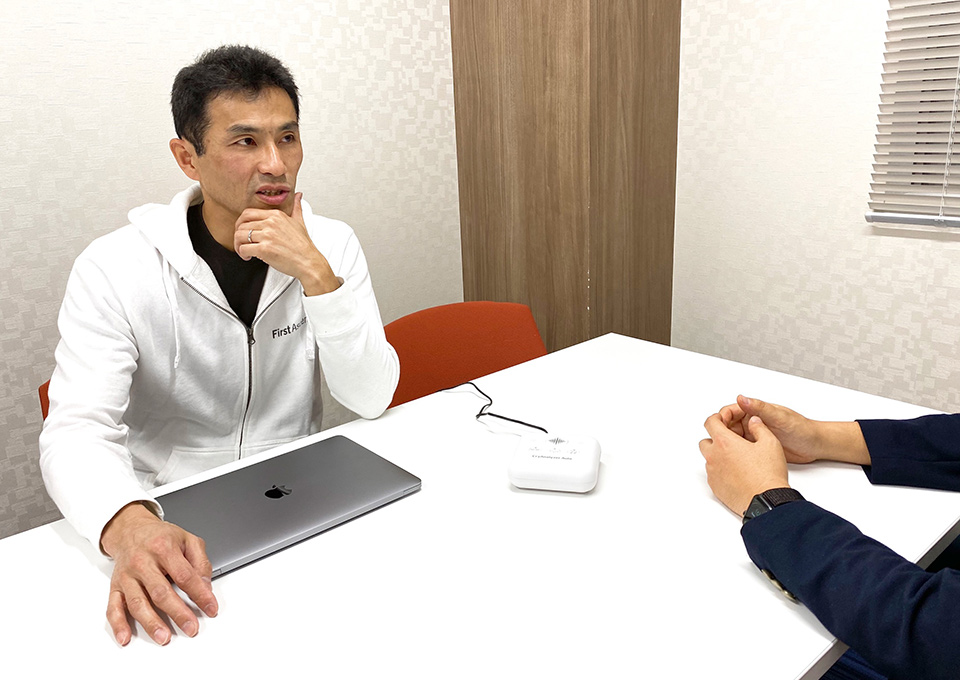
Nagata:What was the main relationship between the sense of "we have to do deep learning" and the feeling that "deep learning can analyze baby cries"?
Hattori:I had a fantasy that deep learning might reveal a baby's true emotions for the first time. I was interested in the technology, but I was also curious whether deep learning might actually be more accurate than a mother's judgment based on her senses. I was curious. Also, since we are a technology venture company, I had a sense of mission to work on deep learning.
Nagata:So the "awareness of issues" and "technological trends" that your company was facing just matched.
Hattori:Furthermore, Google does not have a large amount of data on baby cries, and it would be difficult for anyone other than our company to do this, which is why we undertook the R&D.
An "internal coincidence" led to the creation of CryAnalyzer Auto.
Nagata:That is exactly the name of your company, First Ascent (i.e., the first ascent). Now, the technology developed to diagnose "baby cries" has been incorporated into your company's smartphone application called "Pappa Pappa Childcare @ Baby Notebook". And since the percentage of correct answers exceeded 80%, it was introduced on TV and also won the grand prize at the Baby Tech Awards Japan 2019. How did you go from there to this "hardware" called "CryAnalyzer Auto"?
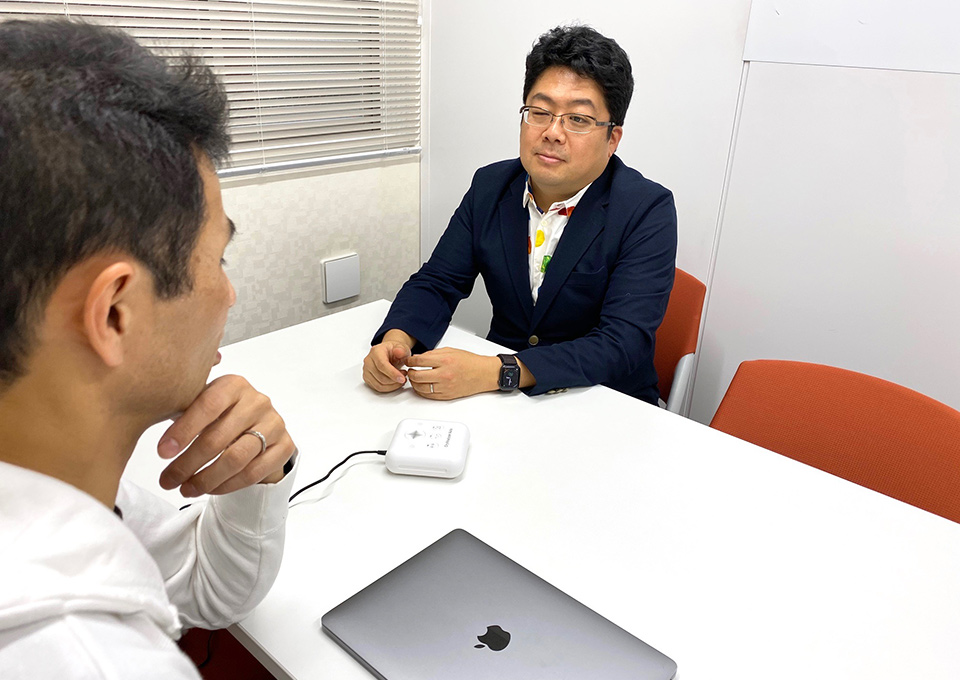
Hattori:I knew that it would be difficult to launch the application ...... every time the baby is crying, and I thought that if we could analyze the crying automatically and continuously, we could learn a lot more about the baby. We also thought that if we wanted to continuously detect and analyze cries, we would have to create hardware that would be placed near the baby's bedside at all times. However, we did not have the strength to develop hardware from scratch, so we stopped at just the concept. It was in this state that we came to realize one day that we had to develop a new hardware. We had previously assisted in another project for seniors, and at that time we were making a nurse call. This nurse call has a microphone and a chip that can run an "algorithm to analyze the baby's cry". So we realized that we could modify this and do it in no time.
From there, I set a goal to "attend CES. At CES, the so-called "consumer electronics trade show," no matter how much you say, "This algorithm is amazing," it will not attract attention. I knew that I needed to bring "hardware" to the show, so I thought, "This will work! I thought.
Nagata:Yes, there is an atmosphere that if you are going to "CES" you have to be hard.
Hattori:President Aoki of YUKAI KOGAKU K.K. also told me, "You need hardware for CES. You can't get people to pay attention to your apps. I was always aware of this.
What are the "severe hurdles" imposed on "CES exhibitors"?
Nagata:I heard that you went through a lot of hardships between the completion of the product and its exhibition at CES.
Hattori:When we decided to exhibit at CES, we consulted with JETRO (Japan External Trade Organization). JETRO had exhibited at last year's CES with a "Japan Booth" featuring Japanese startup companies, and we had heard that there was a possibility that we could be allowed to participate there. As a result, we passed the initial screening by JETRO, but next came the screening by CTA (Consumer Technology Association of America, the organization that organizes CES). The problem that arose was the participation requirements for Eureka Park (an exhibit zone exclusively for startup companies) at CES, where we planned to exhibit this time. Of particular importance was the fact that "companies that have not yet launched their first product or have launched after January 1, 2019.
Nagata:Surprisingly, the CTA seems to be strict about it. This time, too, some Japanese companies were told, "Why is your company in Eureka Park? Some Japanese companies were told to exhibit in the general corporate exhibit zone.
Hattori:In our case, the company was founded in 2012, so from the CTA's point of view, it would be an absolute lie for a company founded in 2012 to launch its first product in 2020, no matter how you look at it. To break through that, I explained that for the first five years after the company was founded, we provided the app for free to collect "childcare big data" and conducted research and verification based on that data. Then, in 2017, we had enough proof that we could create a product using childcare big data, and this time, we released our first product to be sold for a fee. ...... This is a grand story. In fact, this is exactly how we explained it, but we told them that we are a company that has been doing that kind of R&D for a long time, and they managed to get us accepted to exhibit at Eureka Park.
Nagata:Eureka Park on the first floor of the CES venue was an area where ventures and countries set up booths on a country-by-country basis, and the second floor was a zone where so-called general corporate booths were lined up. Therefore, all the Chinese start-up manufacturers who had several hardware products were moved up to the second floor, and they ended up with small booths in the corner of the venue and no one came to see them. ...... I think it was a good decision to exhibit at Eureka Park.
The response from visitors was at a completely "unanticipated level.
Nagata:I understand that you had a great response from the first day you exhibited at CES.
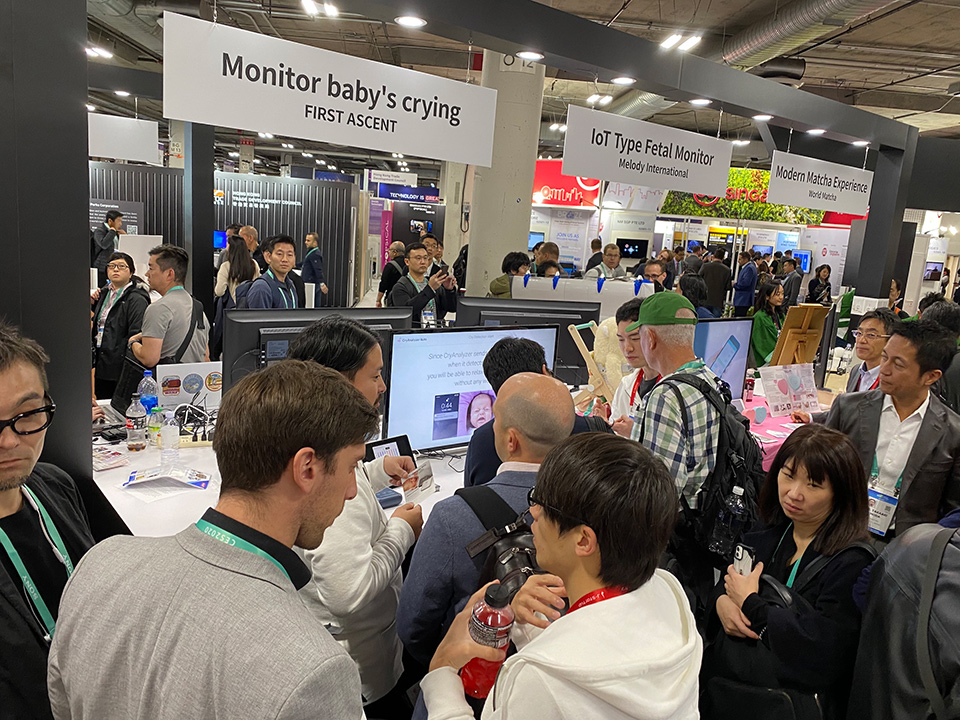
Hattori:In fact, up until the day before, I thought there was a possibility that they would say, "We don't need this kind of hardware. This is because I had heard that in Europe and the United States, the method for putting children to sleep is basically to put them in a separate room and leave them alone even if they are crying. However, the actual reaction was completely different. This seems to be due to the difference between Japanese and Western attitudes toward the use of childcare IT devices. When parents in Japan use IT devices such as cameras to watch over their children, they sometimes react with guilt, saying that they are leaving their children unattended. On the other hand, what Americans told me at CES was something like, "When I was a child, I was put to bed in a separate room and left alone by my parents, but I use cameras to watch over my sleeping children in another room. In other words, the use of IT devices has allowed them to commit more time to child-rearing than their parents did in the past, and they see this as an evolution in child-rearing. Until now, we only used cameras to watch over our children, so we couldn't understand their feelings and changes, but with CryAnalyzer Auto, we can understand their feelings better. I wish I had this when I was raising my own children. From the visitors' reactions, we got the impression that if "CryAnalyzer Auto" were to be sold as a stand-alone product, it would be easier to sell it in Europe and the United States than in Japan (......).

Nagata:I have the impression that the majority of child watch products in the U.S. and Europe are camera-based.
Hattori:That's right. There are many companies that deal with "Mimamori cameras," and we received a large number of inquiries about incorporating an algorithm that analyzes the sound of children crying into a Mimamori camera. At first, we spent a lot of time talking to each company one by one, but we felt that this was not enough to turn the booth around, so we changed our approach to customer service from the middle of the show to not having on-the-spot discussions, and instead, we would contact each other after CES was over. We changed our approach to customer service to "Let's contact each other after CES," instead of having discussions on the spot. We received a variety of inquiries, such as, "Are you thinking of offering exclusive sales rights in a certain region?
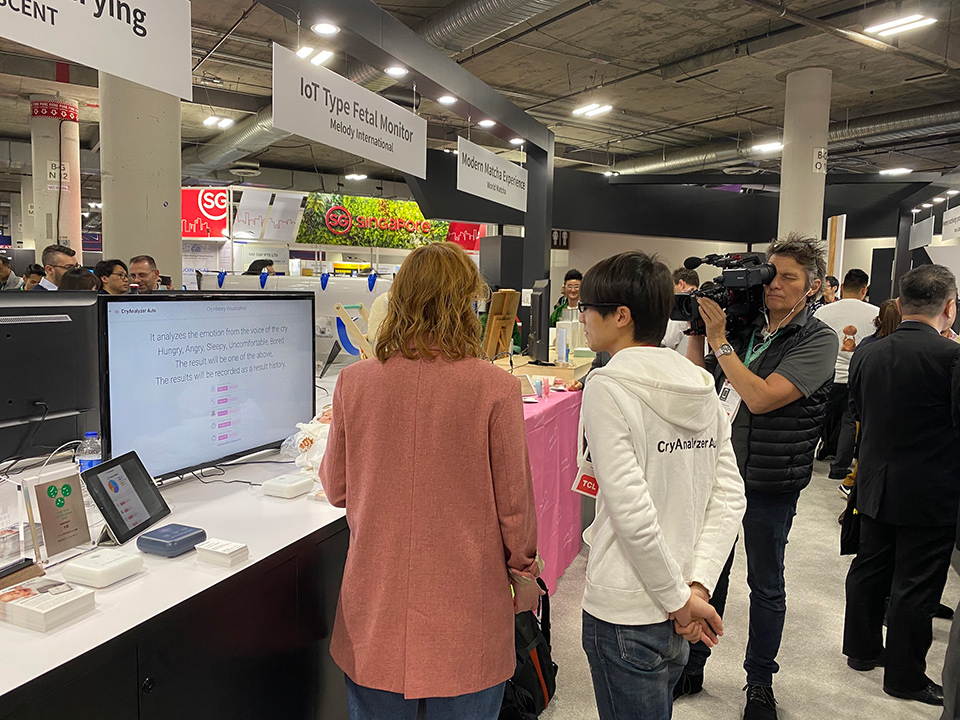
Nagata:Roughly how many people were at the booth?
Hattori:I received about 140 business cards, but I think there were about 200-300 people who took my business card that was left at the booth. Furthermore, I still receive many inquiries from people with whom I have no recollection of conversing at CES, saying, "I saw your booth, and I'd like to contact you at ....... I may have more business meetings with people who contacted me after CES without exchanging business cards.
Nagata:So, do you think you are currently in progress with some companies?
Hattori:Yes, it is.
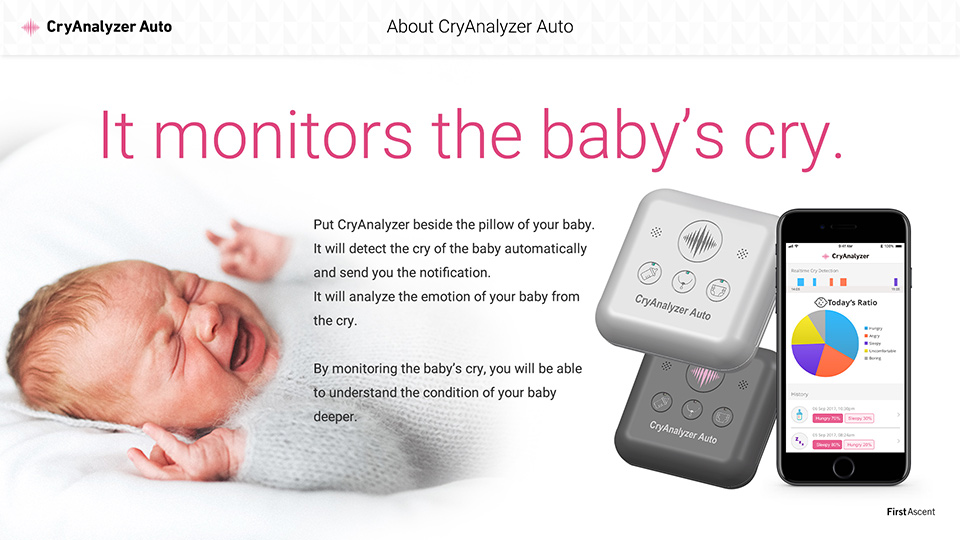
Nagata:By the way, how many people did you have at CES?
Hattori:There were a total of four of us, but all but myself were outside staff members who were introduced to us by acquaintances. One of the factors that contributed to our success at this year's CES was the presence of these incredibly talented people. Thanks to their suggestions, we were able to simplify the presentation materials that we had prepared in advance and communicate them well to the visitors. I also left most of the explanation to the visitors to them, which made the event go very smoothly. If I had handled everything myself, I would have ended up with the reaction, "I don't understand what's going on here. ......
CryAnalyzer Auto" will further upgrade the experience offered by
Nagata:Is it going to take much longer for CryAnalyzer Auto to become a product? Or are you already close to product-out?
Hattori:We are currently in the process of testing the system with the goal of releasing it around August of this year. We are trying to do something that can provide a service to users based on such information, rather than simply telling them what the baby is saying or how the baby's emotions are changing. For example, we can analyze how much the baby cries when being put to sleep, how much the baby cries in the middle of the night, and what the cycle is like.
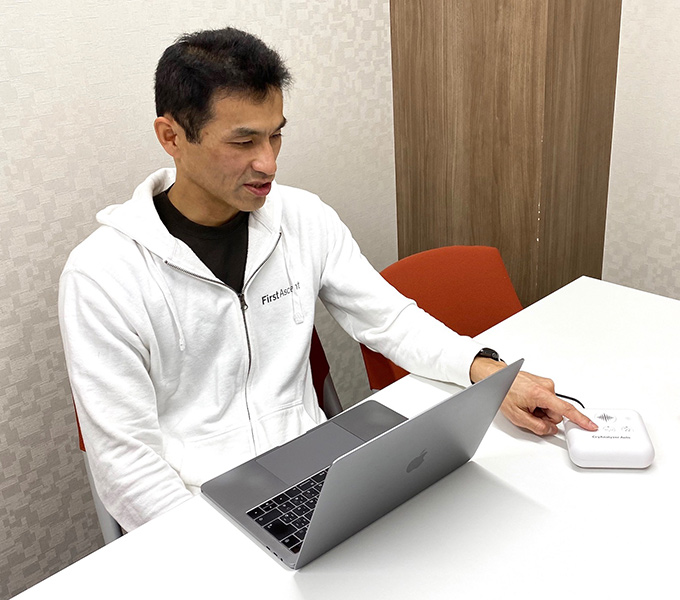
Nagata:Is it possible to analyze the best time to put a baby to sleep or wake him/her up without hardware that measures vitals (temperature, heartbeat, breathing, etc.)?
Hattori:At this time, we are also conducting verification testing with hardware that measures vitals. We are not sure how it will turn out yet, but we are thinking of releasing a vital sensor together.
Nagata:Is the smartphone app "Pappa Pappa Childcare @ Baby Notebook" the contact point for the various diagnostic results of "CryAnalyzer Auto"?
Hattori:There is talk of renewing "Pappa Pappa Childcare," and we'll have to wait until August to consider whether to put it all in there or create another separate app.
CES opened the door to the rest of the world.
Nagata:Finally, can you tell us again about your impressions of CES and what you gained there?
Hattori:What I felt most was that the awareness of paying for this kind of hardware and the willingness to buy it was more vigorous than I had imagined. I had never imagined that we would still be receiving inquiries two months after CES, so I am half amazed and half a little bit frustrated (laughs). (Laughs) Also, when we had a web conference with a large European and American company, I was amazed at how flexible they were in their thinking and how they were willing to draw more and more pictures, asking us, on equal terms, if we could do something like this.
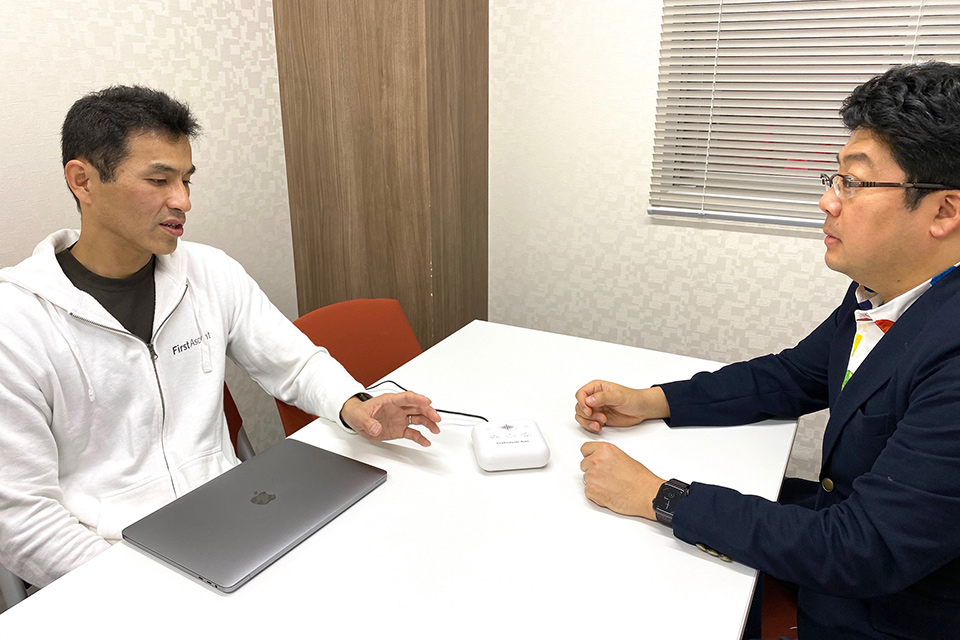
Nagata:Are the companies that contact you still Western? What about the Middle East, South America, Asia, and Africa?
Hattori:Basically, they are from the U.S. and Europe. We have had some discussions with Asian companies, but most of them were manufacturing-related discussions, such as "We are a factory that manufactures OEM products, so let's help with production. Western companies start by discussing what kind of solutions they can provide using our hardware, and when they learn that we are a company that handles big data, the discussion expands.
Nagata:I am very much looking forward to your future. Thank you very much for your time today. The call for entries for the BabyTech Award Japan 2020 started on March 10, and you can apply even if you are not yet in the product-out phase.
Hattori:Thank you very much for your time here.
<After the dialogue
In my recent coverage of baby tech companies in Japan, I have noticed that more and more of them are looking to expand overseas. First Ascent Co., Ltd. has opened the door for baby tech from Japan to go global one step ahead of the rest. I suspect that companies will follow the company's lead one after another in the future. The "BabyTech Award Japan 2020" is scheduled to be held in June 2020, and entries are being accepted from March 10, 2020. We can't wait to see what kind of baby tech items will be presented!
First Ascent Corporation Official Website
https://first-ascent.jp/
Babytech Award Japan 2020 Official Website
https://babytech.jp/btaj2020home/

